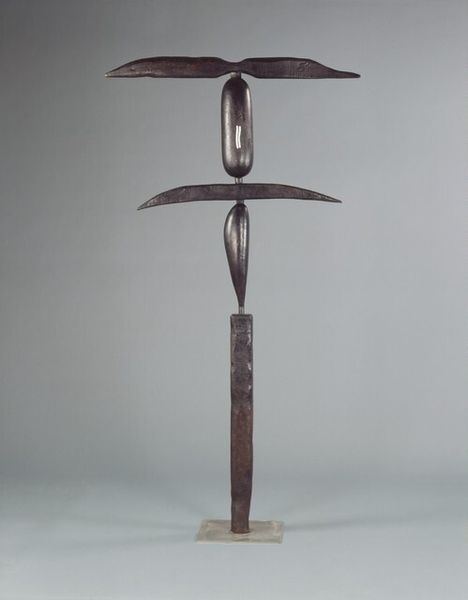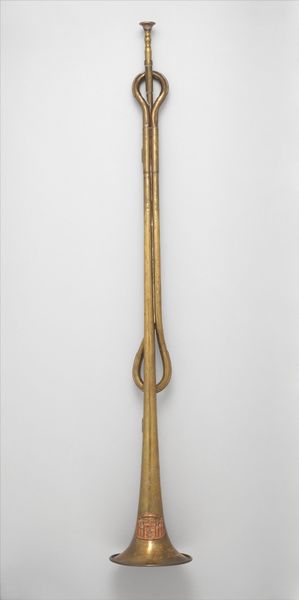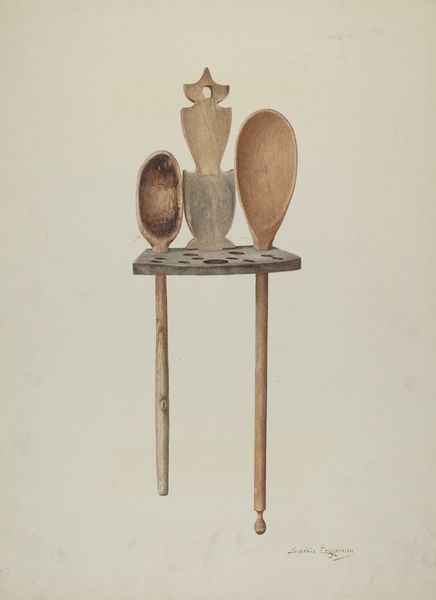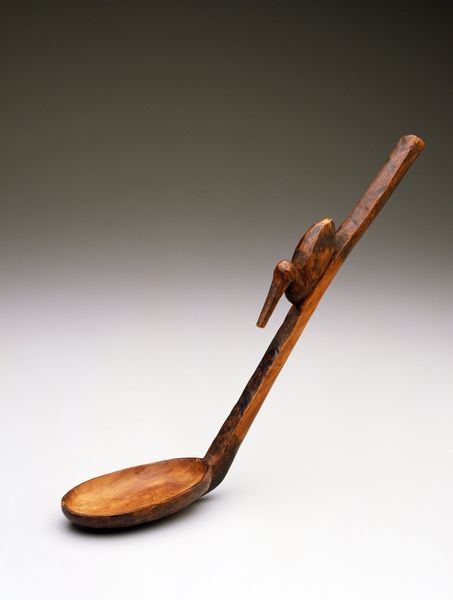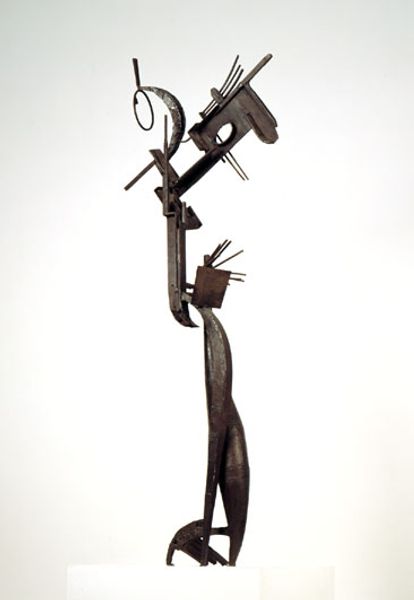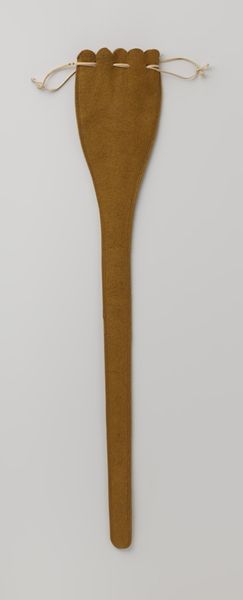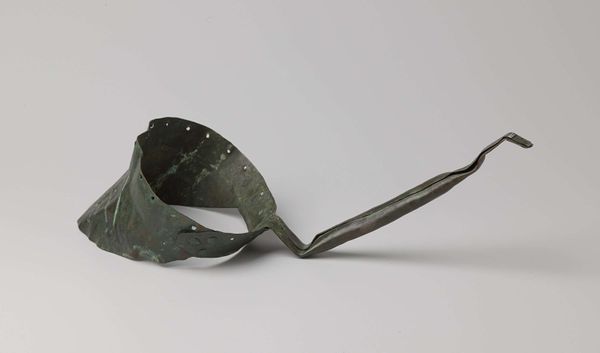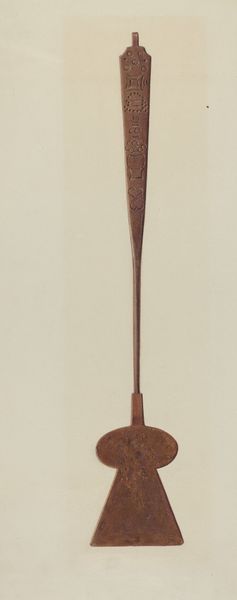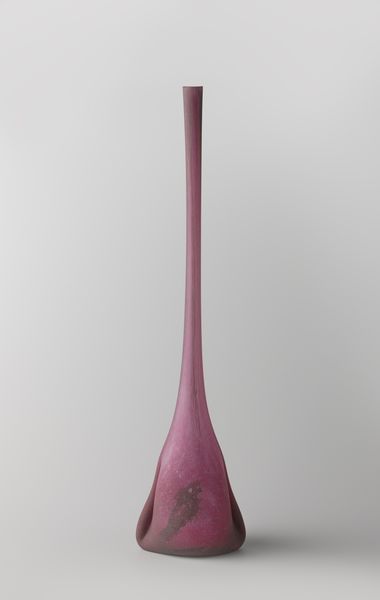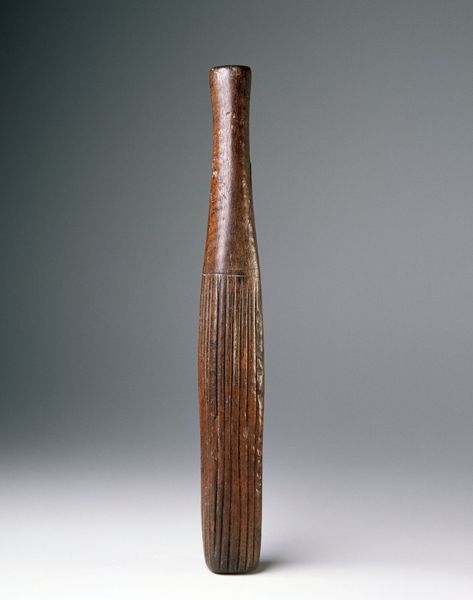
steel, assemblage, metal, sculpture
#
abstract-expressionism
#
steel
#
assemblage
#
metal
#
stone
#
sculpture
#
sculptural image
#
form
#
sculpture
#
abstraction
#
line
Copyright: Louise Bourgeois,Fair Use
Curator: Louise Bourgeois created "Paddle Woman" in 1947 using steel in an abstract expressionist style. At first glance, what strikes you? Editor: The austerity of it. The forms are so reduced and elemental, almost severe in their presentation. The rusting metal only adds to this stark feeling. Curator: Indeed. It exemplifies the reductive aspect of Bourgeois’ early sculptural works. We see here, in terms of composition, an ovoid form next to a more linear shape, both extending vertically from simple bases. Do you think there's tension there, between these two shapes? Editor: I find the title immediately intriguing. Paddle Woman. It is a juxtaposition—is Bourgeois highlighting a kind of primal, essential aspect of womanhood? The ‘paddle’ perhaps refers to steering one's own course, or struggling upstream in a male-dominated art world, even society in general? Curator: A very insightful interpretation. Though abstracted, we discern anthropomorphic qualities, particularly the feminine implied in the title. Let's consider this formally; the 'paddle' shape, how do we decode its lines and form in relation to its position next to the other structure? Semiotically, Bourgeois provides strong shapes of her vision—what is seen as feminine or even domestic. Editor: Perhaps, though that linearity hints at a challenge to such confinement—a refusal of domesticity or simple categorization. Given that this sculpture was made shortly after World War II, one wonders about the effects of displacement, anxiety and societal pressures in general on the artist at the time. We know she moved from France to America around then, as well, so she was an immigrant herself. Curator: The biomorphic forms definitely nod to displacement and isolation. Yet it’s fascinating how she renders emotion with such formal economy—color, shape, material and line do all the work, conveying what must have been a deeply conflicted view of femininity. Editor: Indeed, its simplicity hides so much. Considering Louise Bourgeois's larger body of work, "Paddle Woman" offers a vital look into her beginnings and continuing exploration of gender and form. Curator: Absolutely, reflecting both inward anxieties and external struggles of post-war culture through the powerful symbolic language of form.
Comments
No comments
Be the first to comment and join the conversation on the ultimate creative platform.


